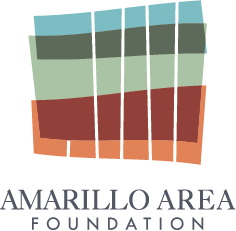
On February 26, just north of Stinnett, Texas, the Smokehouse Creek Fire rapidly grew to 40,000 acres. Over the next three days, the fire would consume an estimated 1,058,000 acres, becoming the largest wildfire in Texas history and the largest wildfire to hit the United States in over 100 years. Several smaller fires also burned during this time, the most notable of which were named the Windy Deuce Fire (144,045 acres) and the Grape Vine Creek Fire (34,883 acres). In total, over 1.2 million acres of prime cattle grazing pastures were destroyed along with hundreds of homes and ranching and farming facilities.
The land itself will recover from these wildfires on its own, but it will be years before ranchers will allow cattle to graze these now barren ranges. Officials in the affected areas are still assessing the damage, a process that could take weeks and months to fully comprehend. In the immediate aftermath of this event, even while the fires spread, relief began pouring into shelters and aid stations like food, bottled water, clothing, and toiletries. Feed and hay also began streaming in, hauled by the truckload from across the region and other parts of the U.S.
No stranger to disaster relief, Amarillo Area Foundation (AAF) immediately activated the Panhandle Disaster Relief Fund to quickly deploy funding to organizations handling the disaster on the front lines. As a community foundation, AAF provides grants to eligible 501c3 organizations, along with city and county governments. We have maintained close contact with officials in the affected areas to provide support when and where it is needed the most.
The list of needs will continue to grow as victims begin to return to the remains of their homes and ranches. The Amarillo Area Foundation’s Panhandle Disaster Relief Fund will continue to provide lasting support over the months and years to follow, and, we hope, will be a beacon of hope to those who have lost so much.
Noted below are preliminary statistics from wildfire-impacted counties in the Texas Panhandle. These statistics will continue to change as assessments continue to be made in each county:
Roberts County:
- 17 occupied homes were destroyed.
- 800 sections of land were burned.
- The county has $10 – $20 million in estimated economic loss.
- 90% of the county was burned.
Hemphill County:
- 61 homes were lost or are uninhabitable.
- 15 – 20 additional homes were damaged by smoke.
- 19 of the homes impacted are uninsured.
- 143 ranchers were impacted.
- 7,000 head of cattle were lost.
- 2500+ miles of fencing were lost or need repair.
- 73% of the entire county was burned.
Hutchinson County:
- 22 homes in Stinnett were lost.
- 150+ homes in Fritch are estimated to be either lost entirely or have severe damage.
- 99 individual damage assessments
- 61 are uninsured
- 10 underinsured
- 28 insured
Since the fires, our staff has been going into the affected areas to grasp recovery efforts. We immediately enacted our Panhandle Disaster Relief Fund to respond to the crisis. Part of that response means going to see first-hand and talk with those who have suffered loss. The goal is to understand the recovery better as grants flow to these areas. We also strengthen our relationships with established partners and sometimes encourage them in their tireless work. We asked our staff to give their perspectives as they traveled in the territory. Here is what they recall.
 Melanie Smoot – Vice President of Development
Melanie Smoot – Vice President of Development
It broke my heart to see more of our Texas Panhandle neighbors impacted by disaster in February and March after the devastating floods and tornadoes that were experienced less than a year ago in Perryton, Amarillo, and Hereford. The faces of the people we visited in Miami, Canadian, Stinnett, Borger, and Fritch were all too familiar.
However, there is so much beauty in seeing these communities come together to support each other with love, care, and compassion for their neighbors. There is also so much sadness to see in all that has been lost.
 Keralee Clay – Senior Vice President
Keralee Clay – Senior Vice President
The first thing that struck me was the sheer scale of the destruction. Mile after mile, what used to be vibrant, life-filled plains were now reduced to barren, ashen wastelands. The once diverse grasslands were now monochromatic black, with charred remains of trees and structures dotting the landscape.
As we ventured deeper into the affected area, we saw remnants of homes and farms, now just hollowed-out shells of their former selves. It was a stark reminder of the human toll these fires had taken. I couldn’t help but think of the families who had built their lives here, only to have them upended in an instant.
Despite the devastation, there were signs of hope. We encountered communities banding together, supporting each other in the recovery process. Volunteers from all over were helping with relief efforts, providing aid to those affected. It was a powerful reminder of the strength of the human spirit in the face of tragedy and the ways Texas Panhandle folks have always taken care of each other.
The experience was a sobering reminder of the destructive power of nature and the fragility of our existence. But it also highlighted the resilience and compassion that emerges in the wake of such disasters. The road to recovery will be long, but with the unwavering spirit of the community, the Texas Panhandle will once again be the robust farm and ranch hub of Texas and the country.
 Lara Escobar – Vice President of Community Investment
Lara Escobar – Vice President of Community Investment
What always amazes me is the generosity of people who want to help. While visiting the affected communities, I was privileged to witness small nonprofits, churches, and individuals coming together with whatever they had to aid their neighbors. It’s in these moments of adversity that the true essence of humanity shines brightest.
I’ve had the privilege of listening to community leaders share stories of devastation and resilience. As they recount the challenges they face and begin to brainstorm strategies for rebuilding, one thing becomes abundantly clear – these communities are determined to not only recover but to do so in a way that honors the past and addresses the present needs of their community. Community leaders are reaching out to all partners – foundations, corporations, individuals, emergency assistance organizations, churches, and nonprofits – recognizing that it will take a collective effort to rebuild what has been lost.
One poignant scene that continues to resonate with me is the sight of teams tirelessly bringing hay and feed for the cattle that now roam the barren land. These animals, once grazing peacefully, are now left with charred pastures and scarce resources. Yet, in the face of adversity, communities refuse to stand idly by. They’re acting to ensure that these animals have the sustenance they need to survive in their altered environment.
To all those who have lent a helping hand, whether through donations, volunteering, or simply offering a kind word of encouragement, I extend my deepest gratitude. In the face of adversity, let our actions speak volumes. Let us show the world what it truly means to come together in times of need. And let us continue to embody the resilience and compassion that define the heart and soul of the Texas Panhandle.

